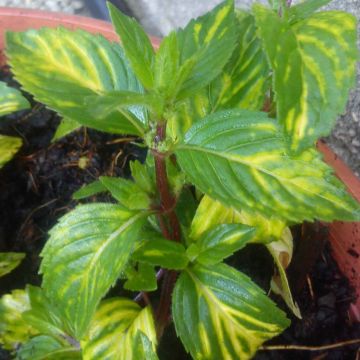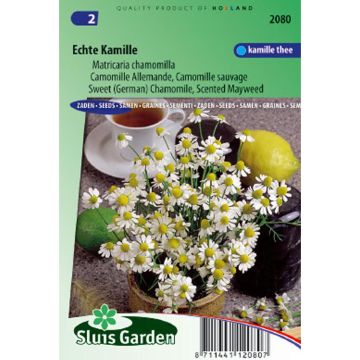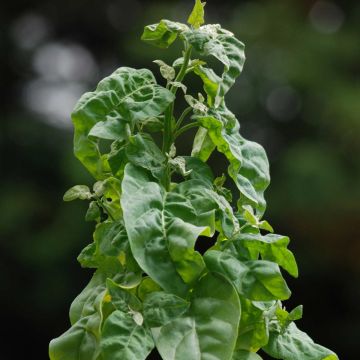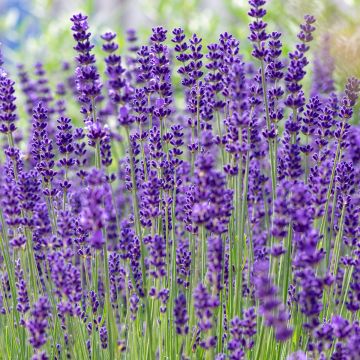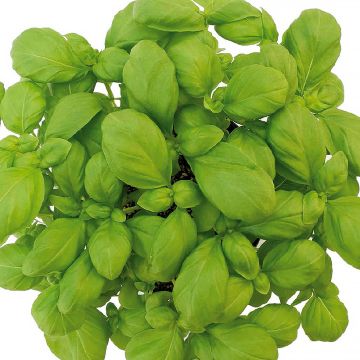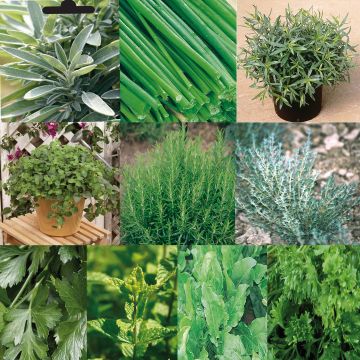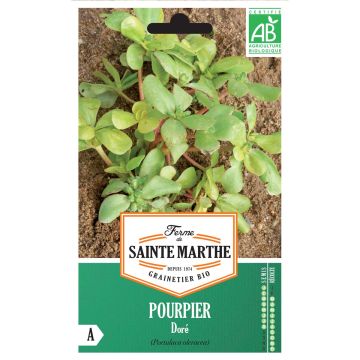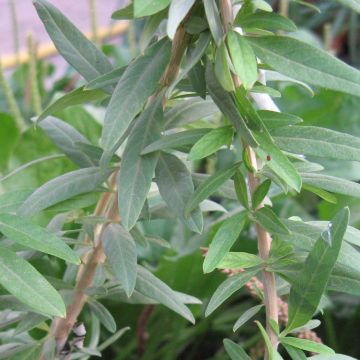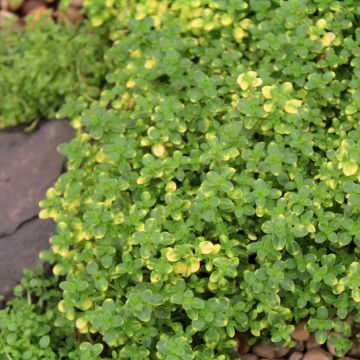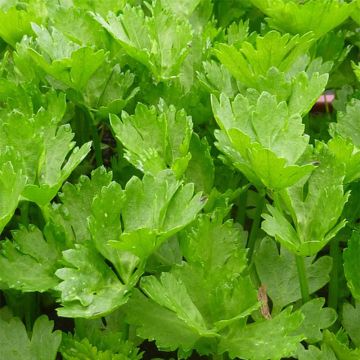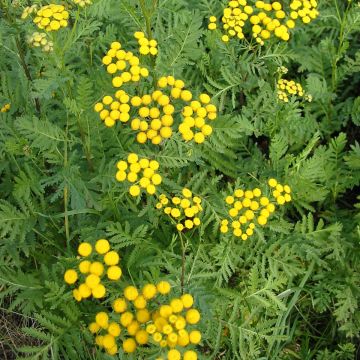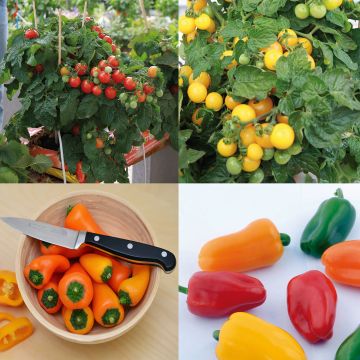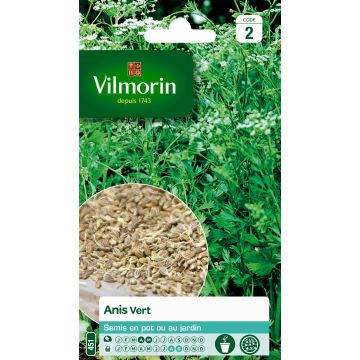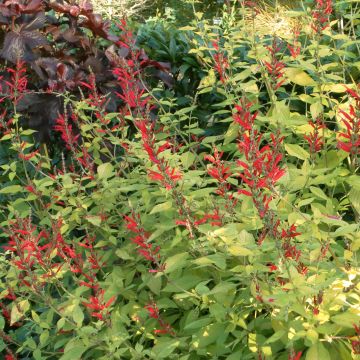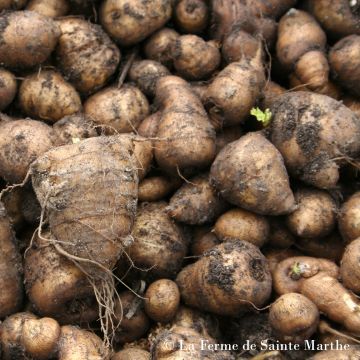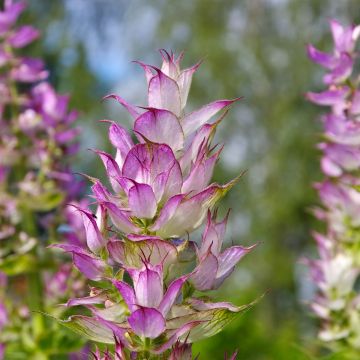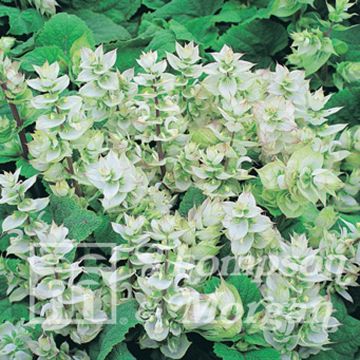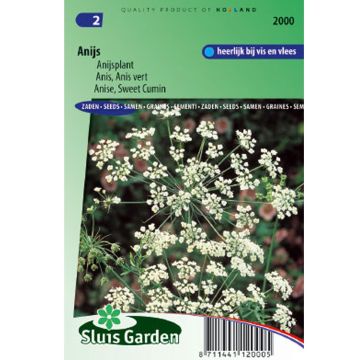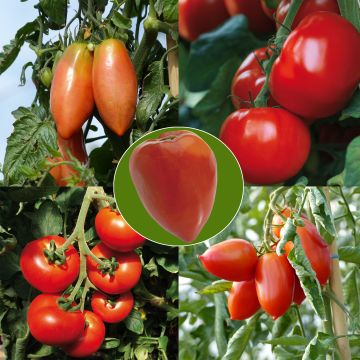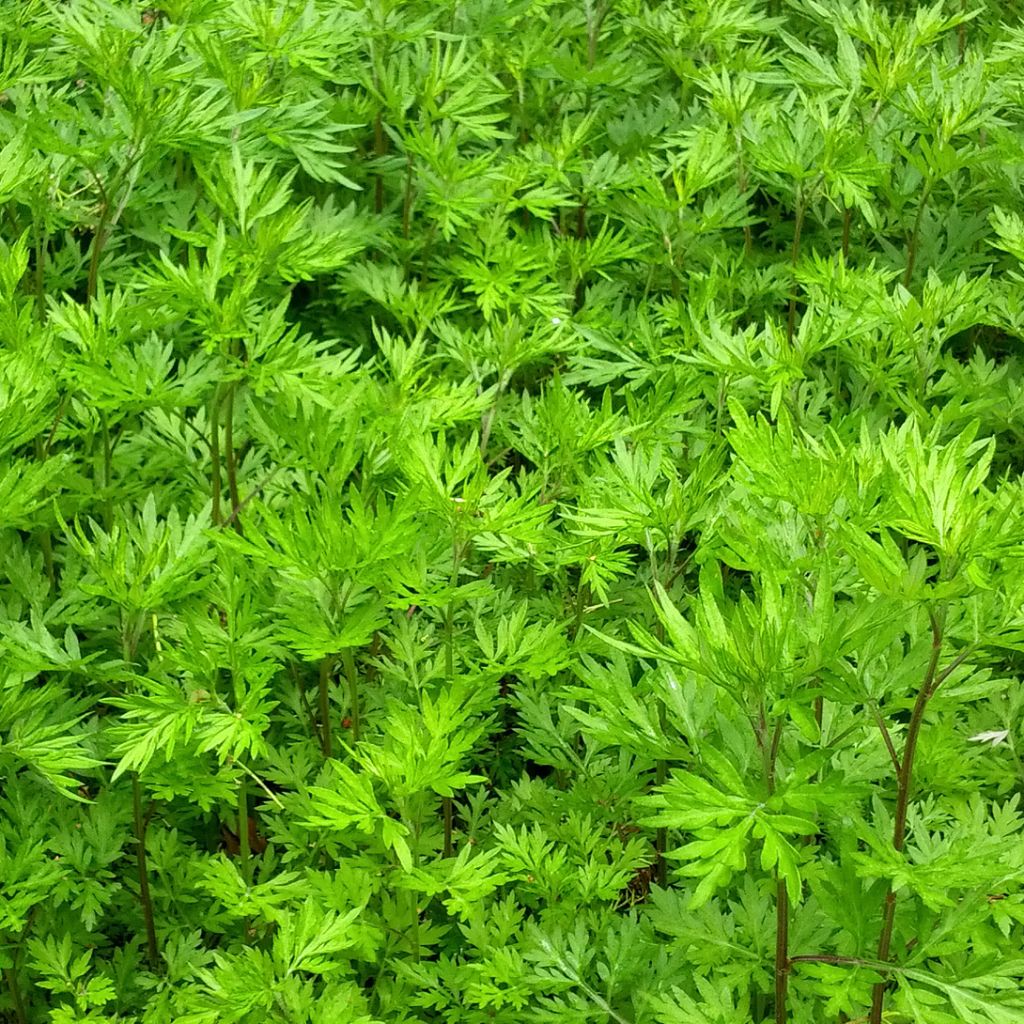

Mugwort - Artemisia vulgaris
Mugwort - Artemisia vulgaris
Artemisia vulgaris
Mugwort, Common wormwood
This item cannot be shipped to the selected country
Delivery charge from €5.90
Delivery to Corse prohibited
More information
Schedule delivery date,
and select date in basket
This plant carries a 6 months recovery warranty
More information
We guarantee the quality of our plants for a full growing cycle, and will replace at our expense any plant that fails to recover under normal climatic and planting conditions.
From €5.90 for pickup delivery and €6.90 for home delivery
Express home delivery from €8.90.
Delivery to Corse prohibited: UE law prohibits the import of this plant from mainland France to Corse as part of the fight against Xylella fastidiosa. Please accept our sincere apologies.
More information
Description
Artemisia vulgaris, sometimes called fire herb, wormwood, and mugwort, is a perennial aromatic plant closely related to absinthe. Its finely cut foliage is highly decorative. It is cultivated for its ornamental aspect and its repellent and insecticidal properties, which are very useful in the vegetable garden. Plant it in spring and harvest its leaves the following summer.
Wormwood is native to continental regions of Europe, Asia, and North Africa. It belongs to the Asteraceae family and the Artemisia genus, just like absinthe and tarragon. This aromatic and medicinal plant is easily found in the wild (but should not be confused with ragweed). It forms a bushy clump about 1m (3ft) tall and 50cm (20in) wide. Artemisia vulgaris has finely cut leaves that are dark green on top and silver-white underneath, carried by reddish stems. Yellow or purple flowers appear from July to October. This perennial plant is hardy, at least down to -15°C (5°F), but has a relatively short lifespan. It should be pruned in autumn to maintain a compact habit. In the garden, wormwood thrives in full sun, even in scorching conditions. It prefers light, well-drained soils, and can tolerate poor and dry soil.
The use of wormwood in cooking is delicate due to its bitterness. It is also toxic if consumed in large quantities. In moderation, young shoots can be used to flavour salads or for use in infusions. Their flavour resembles that of artichoke. Wormwood has antispasmodic properties. It also has abortive properties, so caution is advised. It is primarily grown for its ornamental aspect and its repellent and insecticidal properties, which are very useful in the vegetable garden.
Harvest: the leaves are harvested in June-July, before flowering, preferably in the late afternoon.
Storage: the leaves can be consumed fresh or dried and stored in a dark and dry place.
Gardener's tip: in the garden, spray a wormwood infusion to repel insects, rodents, and slugs. Prepare the infusion with 1kg of fresh plants for 10 litres of water (preferably rainwater). Place the plants in a net bag, like a potato or orange bag, so that you can weigh it down with a stone, for example, at the bottom of a non-metallic container. Cover and stir the mixture every day. Fermentation begins after a few days. When there is no more foam, filter and use the preparation, diluted to 10%. If necessary, store the infusion in airtight containers, placed in a cool and dark place.
Report an error about the product description
Mugwort - Artemisia vulgaris in pictures
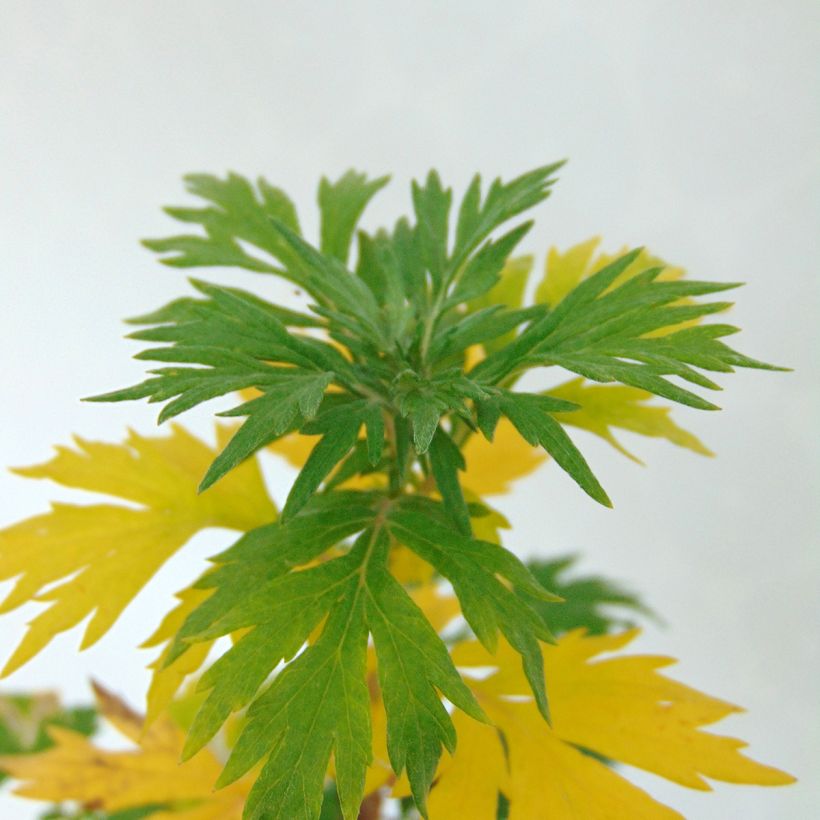

Harvest
Plant habit
Foliage
Other Herbs A to Z
Planting and care
Artemisia vulgaris thrives in the sun, even in scorching heat. It appreciates light, well-drained soil, and can tolerate poor and dry soil. Choose an open area as it will quickly grow in size. It should be planted in spring.
Loosen the soil deeply. Position the young plants, spacing them 60cm (24in) apart in all directions. Trim the clump in autumn to maintain a compact habit. After flowering, cut the flower stems before they go to seed to prevent spreading in the garden.
Artemisia is hardy to at least -15°C (5°F), but has a relatively short lifespan. It is usually replaced after 3 years.
Cultivation
Care
Intended location
-
, onOrder confirmed
Reply from on Promesse de fleurs
Herbs
Haven't found what you were looking for?
Hardiness is the lowest winter temperature a plant can endure without suffering serious damage or even dying. However, hardiness is affected by location (a sheltered area, such as a patio), protection (winter cover) and soil type (hardiness is improved by well-drained soil).

Photo Sharing Terms & Conditions
In order to encourage gardeners to interact and share their experiences, Promesse de fleurs offers various media enabling content to be uploaded onto its Site - in particular via the ‘Photo sharing’ module.
The User agrees to refrain from:
- Posting any content that is illegal, prejudicial, insulting, racist, inciteful to hatred, revisionist, contrary to public decency, that infringes on privacy or on the privacy rights of third parties, in particular the publicity rights of persons and goods, intellectual property rights, or the right to privacy.
- Submitting content on behalf of a third party;
- Impersonate the identity of a third party and/or publish any personal information about a third party;
In general, the User undertakes to refrain from any unethical behaviour.
All Content (in particular text, comments, files, images, photos, videos, creative works, etc.), which may be subject to property or intellectual property rights, image or other private rights, shall remain the property of the User, subject to the limited rights granted by the terms of the licence granted by Promesse de fleurs as stated below. Users are at liberty to publish or not to publish such Content on the Site, notably via the ‘Photo Sharing’ facility, and accept that this Content shall be made public and freely accessible, notably on the Internet.
Users further acknowledge, undertake to have ,and guarantee that they hold all necessary rights and permissions to publish such material on the Site, in particular with regard to the legislation in force pertaining to any privacy, property, intellectual property, image, or contractual rights, or rights of any other nature. By publishing such Content on the Site, Users acknowledge accepting full liability as publishers of the Content within the meaning of the law, and grant Promesse de fleurs, free of charge, an inclusive, worldwide licence for the said Content for the entire duration of its publication, including all reproduction, representation, up/downloading, displaying, performing, transmission, and storage rights.
Users also grant permission for their name to be linked to the Content and accept that this link may not always be made available.
By engaging in posting material, Users consent to their Content becoming automatically accessible on the Internet, in particular on other sites and/or blogs and/or web pages of the Promesse de fleurs site, including in particular social pages and the Promesse de fleurs catalogue.
Users may secure the removal of entrusted content free of charge by issuing a simple request via our contact form.
The flowering period indicated on our website applies to countries and regions located in USDA zone 8 (France, the United Kingdom, Ireland, the Netherlands, etc.)
It will vary according to where you live:
- In zones 9 to 10 (Italy, Spain, Greece, etc.), flowering will occur about 2 to 4 weeks earlier.
- In zones 6 to 7 (Germany, Poland, Slovenia, and lower mountainous regions), flowering will be delayed by 2 to 3 weeks.
- In zone 5 (Central Europe, Scandinavia), blooming will be delayed by 3 to 5 weeks.
In temperate climates, pruning of spring-flowering shrubs (forsythia, spireas, etc.) should be done just after flowering.
Pruning of summer-flowering shrubs (Indian Lilac, Perovskia, etc.) can be done in winter or spring.
In cold regions as well as with frost-sensitive plants, avoid pruning too early when severe frosts may still occur.
The planting period indicated on our website applies to countries and regions located in USDA zone 8 (France, United Kingdom, Ireland, Netherlands).
It will vary according to where you live:
- In Mediterranean zones (Marseille, Madrid, Milan, etc.), autumn and winter are the best planting periods.
- In continental zones (Strasbourg, Munich, Vienna, etc.), delay planting by 2 to 3 weeks in spring and bring it forward by 2 to 4 weeks in autumn.
- In mountainous regions (the Alps, Pyrenees, Carpathians, etc.), it is best to plant in late spring (May-June) or late summer (August-September).
The harvesting period indicated on our website applies to countries and regions in USDA zone 8 (France, England, Ireland, the Netherlands).
In colder areas (Scandinavia, Poland, Austria...) fruit and vegetable harvests are likely to be delayed by 3-4 weeks.
In warmer areas (Italy, Spain, Greece, etc.), harvesting will probably take place earlier, depending on weather conditions.
The sowing periods indicated on our website apply to countries and regions within USDA Zone 8 (France, UK, Ireland, Netherlands).
In colder areas (Scandinavia, Poland, Austria...), delay any outdoor sowing by 3-4 weeks, or sow under glass.
In warmer climes (Italy, Spain, Greece, etc.), bring outdoor sowing forward by a few weeks.

































